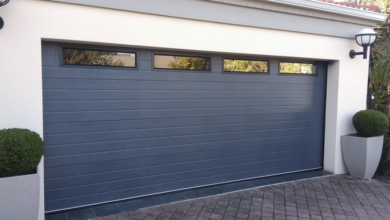How to Size a Mini Split System for Your Home

Mini split air conditioning units or heat pumps are heating and cooling systems that feature both outdoor and indoor air-handling units connected by a tiny hole in the wall.
When trying to find the best HVAC system for your home, room size plays a primary role when selecting the appropriate BTU capacity; however, other external factors can also have an effect.
When choosing a mini-split AC or heat pump, remember that factors like insulation, climate, and sun exposure also matter. Want to install a mini split system? Check out the best mini split professionals in Springdale, AR, for expert guidance in picking the right system for your needs.
Here is how to size a mini split system for your home and some factors to consider as you search for the perfect unit.
Room size and type
Mini split systems should be carefully chosen to provide comfort without overworking their unit. To do so, the unit must possess a British thermal unit rating that fits with the specifications and needs of its location.
For example, a kitchen with appliances that generate heat and require more power to run efficiently, and a bathroom or laundry room may be warmer or more humid as well. These should be considered when calculating BTU loads.
Also, consider the number of people living within the space – more people present means more significant heating/cooling requirements.
Ceiling height
Ceiling height can be integral in determining which mini split system size to purchase for heating or cooling a room, significantly if its ceiling height exceeds 8 feet. In such an instance, it is recommended to add a 20% higher BTU rating when purchasing any mini split system.
Doors, windows, and climate region
Door and window positions in any room will affect BTU requirements since warmer air tends to rise while denser, cooler air sinks.
Climate can play an influential role in indoor temperatures, necessitating an increase in BTU rating by at least 30% for your mini-split system. If your area regularly experiences high summertime temperatures above 90 degrees Fahrenheit, for instance, then at a minimum, you should increase its BTU rating by 30% to ensure that your system can manage the intense heat.
Direct sunlight can also influence the cooling capacity required of a mini-split system for a room, so if this area receives lots of direct sun or is nearby an area producing lots of heat like the kitchen, a larger-sized unit may be required to cool it off effectively.
These factors are just the starting point in selecting an optimal mini-split system for your home. Still, professionals will consider even more variables to fulfill all your comfort needs.
Condition of your home’s insulation
Age and quality of insulation both play an integral part in determining which size mini-split system you require in your space. How old is your home? Is your insulation still effective in keeping your indoors comfortable?
A professional will consider this when recommending an optimal system suit for your home.
Lightbulbs
Your light fixtures produce heat that impacts the BTU requirements for any room; some types of bulbs produce more heat than others., so factor this into your calculations.
Conclusion
Considering these factors is paramount when choosing a ductless mini-split system for any space. Selecting one with too low BTU capacity will not effectively or efficiently heat or cool the area and could result in energy waste and discomfort. Conversely, setting up an overly powerful system could significantly overrun its surroundings and decrease its lifespan.



